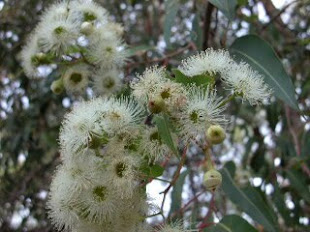Further on, I stopped to gaze downslope at the paperbarks and wetland sedges about fifty metres to my left. A distant rustling drew my attention to a small dark animal pushing slowly through the undergrowth about twenty metres away. What could it be? It was about the size of a basketball, but not quite as round of course, and moving deliberately without any sign of fear, so it probably hadn't noticed me. I carefully slid my backpack to the ground, and stooping, took out my camera, all the while keeping my eyes on the dark fur.
The animal moved a little closer, and then I could see long caramel-coloured spines on the fat body. I saw the small head come up momentarily and there was a long dark beak. Ahah!
(Can you see the animal in this photo?)
What a wonderful sight on a cool winter's afternoon! I moved in a little closer and took another photo, keeping the breeze in my face and the animal in front of me so it would not be able to pick up my human scent. (These animals reputedly have poor eyesight but good hearing and an excellent sense of smell.) I moved as stealthily as I could, but it was difficult because there were dry leaves and branches scattered everywhere across the sand.
It was a big fat echidna (
Tachyglossus aculeatus), foraging for food. The photo above is a back view - see the lovely patterns of spines around the two back legs and the tail? Usually echidnas don't come out during the day unless the weather is cool; they're nocturnal and seldom seen. I have spotted echidnas in broad daylight before, but this was the first time I'd had a camera with me; a great opportunity for photos.
I followed the echidna around for about fifteen minutes, watching quietly as it thrust its beak into the ground, or waddled around amongst fallen timber looking for termites and ants.
In this photo, the echidna has the front part of its head in the ground. I watched as it dug a furrow and broke open an underground termites' nest, pushing its head along just under the surface, propelled by short stout (and very strong) legs. Here's a photo of the furrow it left.
Lastly, the echidna climbed up on some fallen timber to investigate its potential for termites, and I managed to get the best picture of the day.
The bushland continues to amaze me; something new to experience every time.



















































